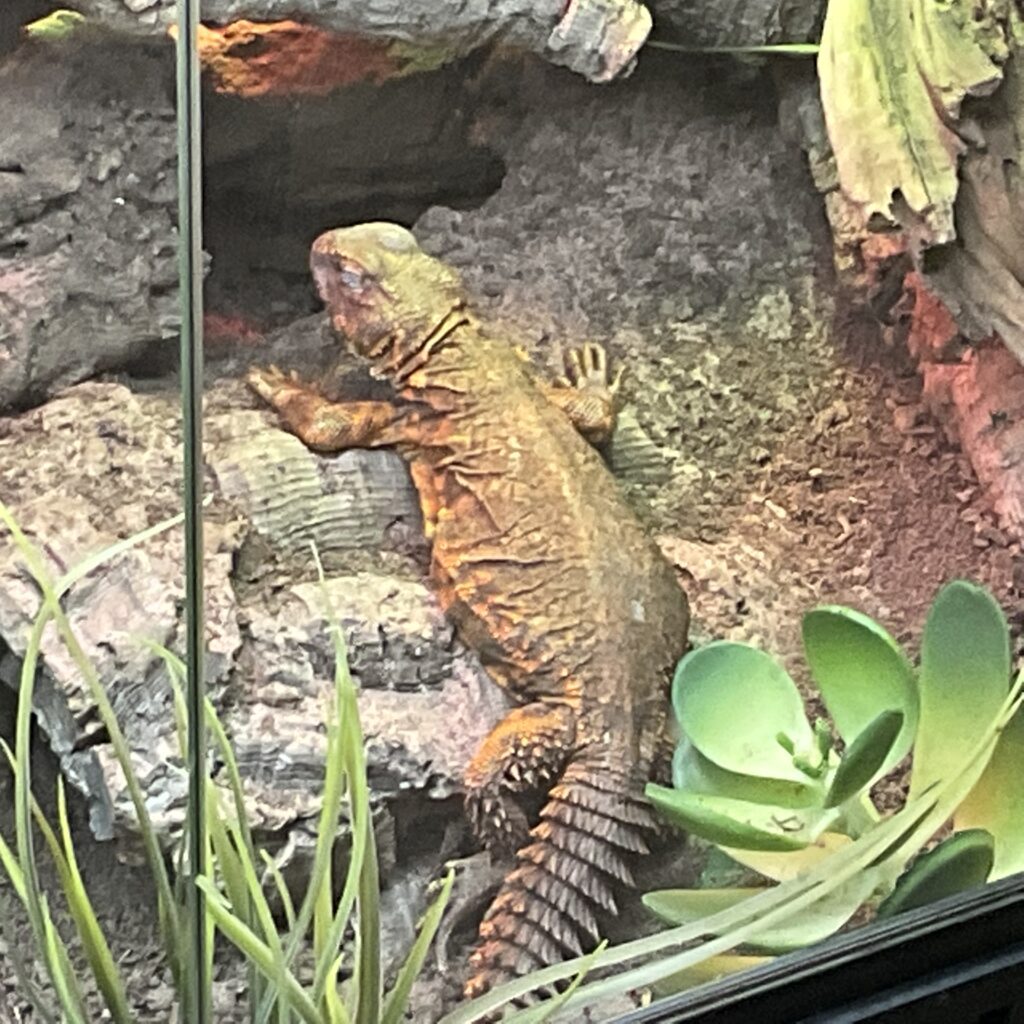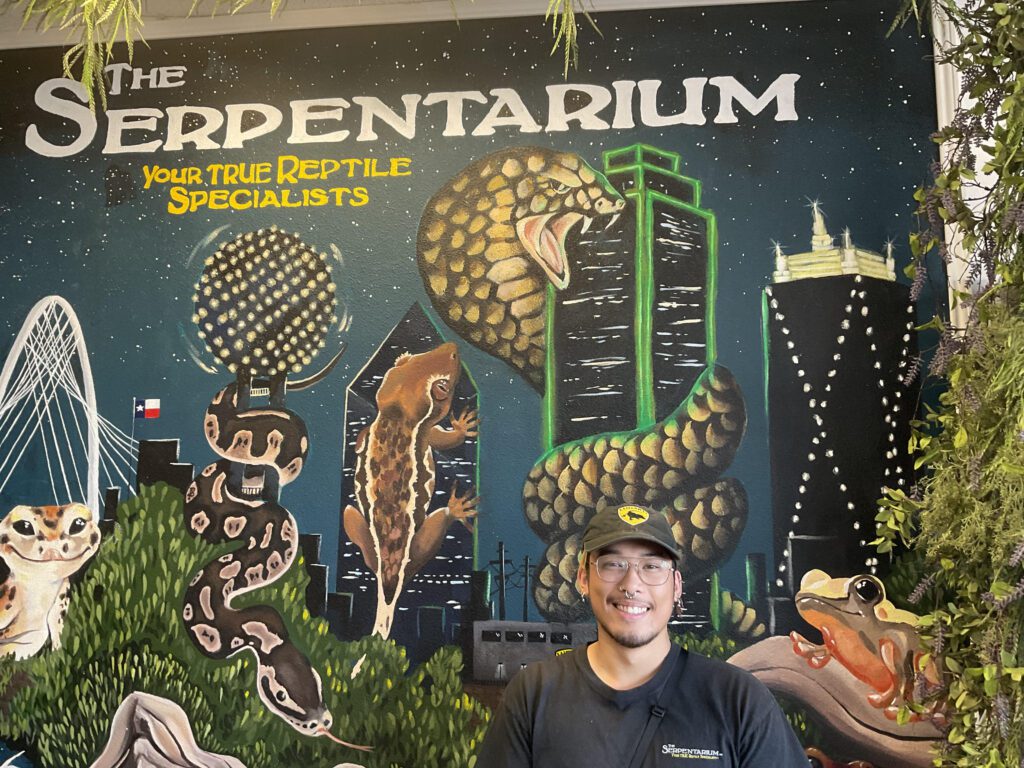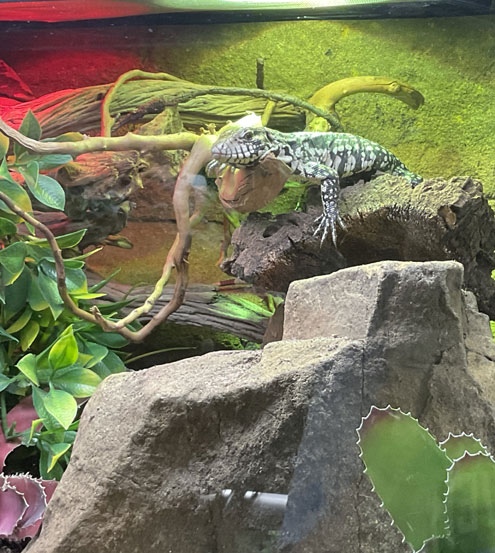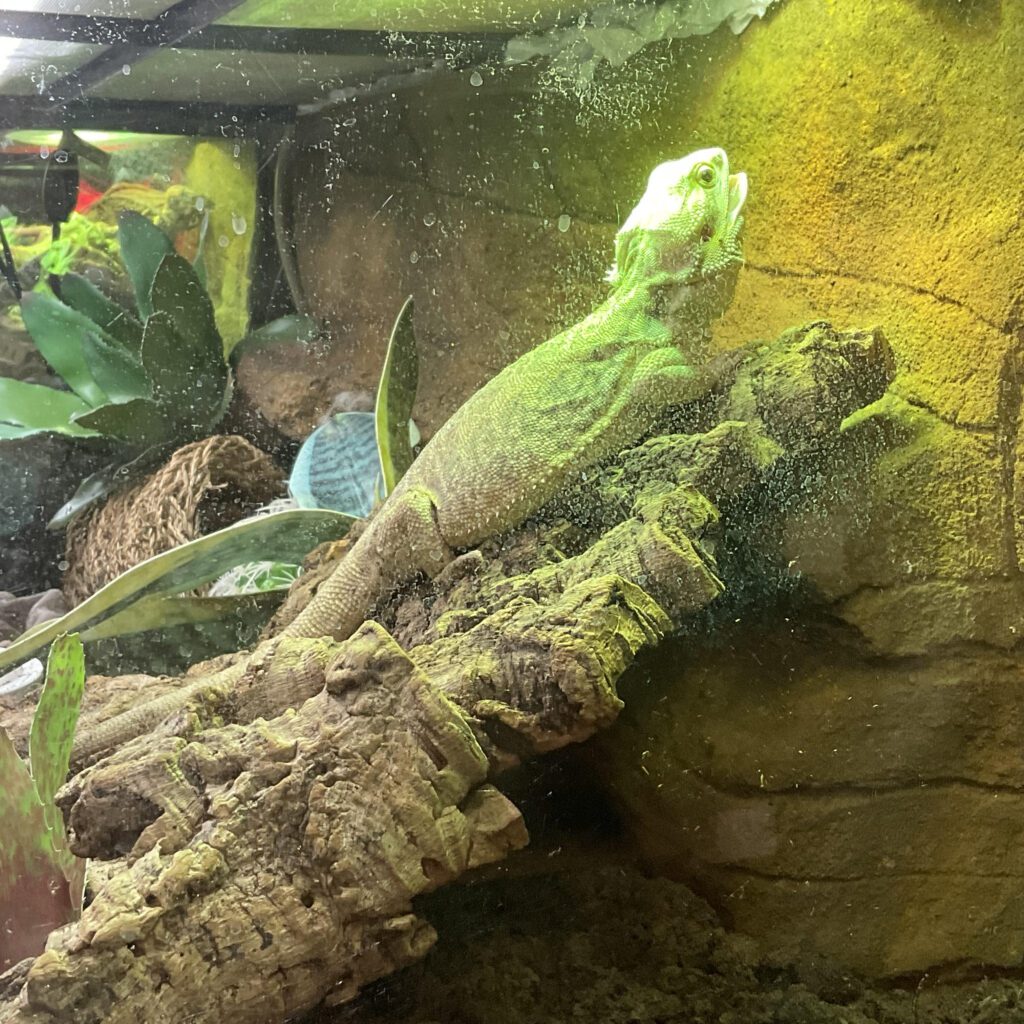Scaly and slithery might just be how you describe your dream pet thanks to The Serpentarium in Richardson
Richardson, Texas — It’s the age-old picture of the American Dream: a picturesque white picket fence surrounding a beautiful suburban home where your spouse, children and a tail-wagging retriever live.
When it comes to dogs, they’ve certainly developed quite an impeccable reputation that’s helped them earn their place in that idyllic dream life. It wouldn’t be hard to find dozens of dedicated dog owners who would agree with the characterization of their pooches as reliable, unconditionally loving, happy-go-lucky balls of fur that are the embodiment of man’s best friend. It’s the kind of reputation that’s undoubtedly helped dogs become part of 54% of U.S. households according to the 2021-2022 American Pet Product Associations National Pet Owners Survey.
What about all the pets that aren’t so fluffy though? What about the pets that are a little bit more cool-headed, both in personality and touch? Do they have a spot in family homes? In short, what about reptiles?

For some, reptiles evoke fear and trepidation. There’s the all-too-common stereotype that reptiles are just scaly, cold-blooded creatures that are inherently creepy or dangerous, definitely not something you would want around your family.
“There’s a certain picture painted when it comes to when people think about reptiles, and that’s totally fine, but that’s where we come into play,” Joseph Mesias said.
Mesias is the store manager for The Serpentarium, the Richardson-based North Texas location for a chain of specialty reptile stores that sells everything from snakes and turtles to chameleons and bearded dragons along with all the supplies necessary to take care of them.

“In reality, reptiles are more afraid of people than we are of them at the end of the day,” Mesias said describing the common misconception that pets like snakes are naturally aggressive or mean towards people, citing movies like Snakes on a Plane and Anaconda as some popular examples of the perpetuation of myths surrounding them. “I mean think about this. If you were just a torso and a head and you’re just kind of like a noodle, and you have to see everything in the world from that perspective; the world would be a pretty scary place, let alone shrunken down to maybe a few feet.”
Mesias said that reptile ownership can be a highly rewarding experience for people who make them part of their family, similar to dogs or cats.
“They’re just not like soulless, scaly, cold-blooded things. They are truly creatures to admire,” Mesias said. He explained that reptiles come in a tremendous number of varieties all with different care requirements, similar to dog breeds, except certain reptiles can also come in hundreds of different color varieties and patterns even within the same species.

The Serpentarium certainly provides proof of that variety. The store’s three main aisles, divided into desert, rainforest and snake sections, showcase a number of different reptile varieties ranging from the popular bearded dragons, which are known for their interactivity and gentle demeanor, to lesser-known, exotic reptiles like an Argentine tegu and uromastyx.
Mesias also knows a thing or two about reptile variety from his personal life. He goes home to more than 30 reptiles including a chuckwalla, Brazilian Rainbow Boa, two Burmese mountain tortoises, “a lot of geckos” and many more.
Mesias explained that he’s able to care for all of those pets thanks in part due to the comparatively low level of maintenance that some of his require. He noted that certain reptiles like bearded dragons, Mesias has just one, need daily care and feeding whereas others like snakes generally only need fed once every 7-10 days. Different reptiles oftentimes have wildly varying tank requirements as well, some of which the owner can automate depending on the specific function required by using machines like timed misting systems.

“In order to live a lifestyle like that, you have to be able to have not only the capacity to maintain all of that stuff (the various reptile enclosures and care procedures), but also the balance, too, of ensuring that everybody’s on track,” Mesias said. “Now for those who just keep one or two animals, it’s really straightforward. But again, it really, at the end of the day, depends on what works for you and what you are looking for, and that’s cool.”
Finding out what works for each prospective reptile owner is at the heart of what The Serpentarium does to help its customers. Education is a major component of the work done at The Serpentarium, whether that be employee education or customer care. The Serpentarium trains employees not only to help care for the more than 100 reptiles in the store at a given time, but also to help customers pick out reptiles and understand their needs.

Mesias stressed that there’s not just one ideal fit for a beginning customer, or any customer that comes in for that matter. He encouraged prospective owners to do some of their own research before choosing a reptile to best understand which will fit their expectations and individual lifestyle, much like he has done in his own personal life.
The Serpentarium also trains its reptile specialists to ask questions to help understand the unique situations of each owner such as where their tank will be located, the room temperatures surrounding said tank and how much space they have available.
“The reptile specialists, they are all trained to ask those types of questions to ensure that this animal is being set up properly and fits with whatever home they’re going to,” Mesias said.
While thinking about those types of questions may not come naturally to otherwise experienced pet owners, they just further represent the learning process that Mesias recognizes as a valuable function of stores like The Serpentarium in helping a growing number of people care for and appreciate reptiles in their own lives.
“Part of it is taking that initiative, especially if you don’t know anything about reptiles, it’s taking that extra step and that initiative to understand them and learn about them,” Mesias said.

With reptiles becoming a part of 1.1 million more households between the 2011-2012 National Pet Owners Survey and the aforementioned 2021-2022 edition according to The Insurance Information Institute, an increasing number of people seem to be more than willing to take that initiative too.
Who knows, maybe you could be one of them? Perhaps the perfect companion for your family may just be more on the scalier side than you would’ve ever dreamed of.







